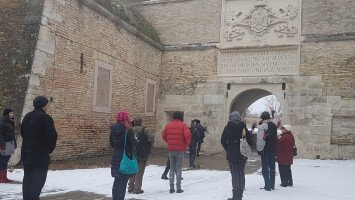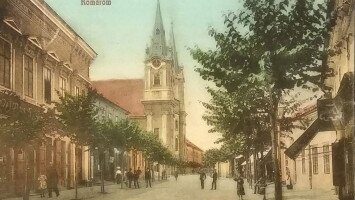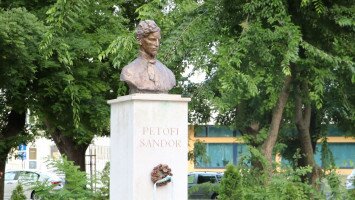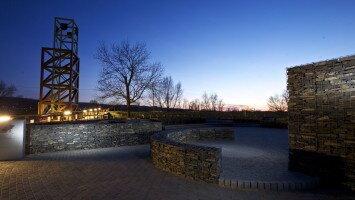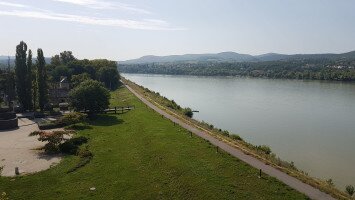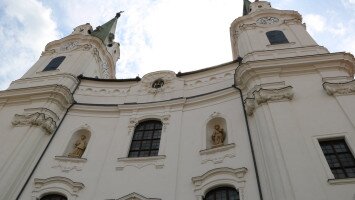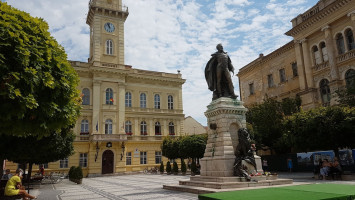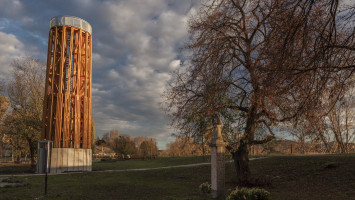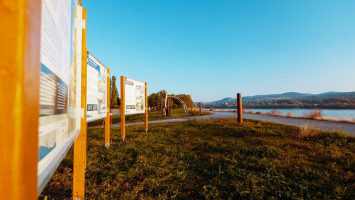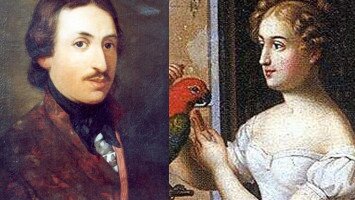
History of Kravany nad Dunajom
From the history of the village
The area of the village was inhabited in prehistoric times, from the Neolithic period a settlement with fluted pottery was found here. Archaeologists have also discovered a settlement from Roman times. The village was the old property of the Tardos family. It is first mentioned in 1245 when Péter Köbölkúti sold the local property to Master Miklós, the royal messenger. His grandchildren, the sons of Miklós Karvai Zovár and Csák together with their siblings Miklós and Péter in the division of property in 1283 they acquired one plow of land. In 1300 The Csákovci ravaged the village and so it is no wonder that it appears under the name Kyseukorva (Malé Kravany). In 1303 Kravany was owned by Miklós Karvai, but his sons Miklós and Péter fell into the suspicion of counterfeiting money and were sentenced to loss of property. Village in 1312 is mentioned under the name Korava and in 1352 as Keroua. R. 1352 Domonkos from the Zovárd family proved that he did not participate in the crime of his relatives and on the basis of this evidence the landlord acquitted him. Later, the Zovárd family divided into several lines Attyai, Karvay, Izsány, and Belényesy.
Since In 1352, the Labatlan family owned the property here, which they received from the king. In the 15th century acquired by the village genus. Kapyovci, originating from Šariš County. In 1409, Zsigmond Gyuked, in 1414 Tamás Chech (Cseh) was introduced into the property donated by the king. In the same year, part of the village was owned by the monastery of St. Martin in Dömös. In 1438, the local landowner was also Péter and János Kaplathovci. In 1453, King gave Kis Karva to László Farkas. In 1505, Menyhért Kapy sold part of the local property to Miklós Attyai, an canonist from Esztergom, and his sisters. In 1519, Miklós Attyai and the descendants of János Kapy wrote an agreement stating that a quarter of the village belonged to Károly Pathy (from Sárkánya), Katalin Kapyi's husband. After the battle of Mohács against the Turks, the village disappeared between 1529 and 1531, but was settled between about 1550 and 1553. This is evidenced by the tax inventory from 1644, where 2 3/4 of serf lands are mentioned. In 1551, after the death of Count Ferenc Nyáry, his property was inherited by his daughter Anna Korláthkeői, b. Nyáry, who was related to the Huszar and Nedeczky families, later landowners of Kravany. In 1558, the Lábatlan family died out, and their property was acquired by Miklós Istvánffy and Pál Ratkovics. Istvánffy, who was in 1581 - 1608 vice-palatine and stood on the side of the emperor, the property was occupied due to the Turks only in 1594. In 1580 the abandoned property of András Muthy was given to Ambrus Csuly. In 1629, the landowners were János Czetényi, the Thury family, the Csúzy family, the Csery family, the Ormay family and the Boglá family. In 1635 in Kravany nad Dunajom we find the families of the Telegdy family, the Csepy family, the Kapy family, the Pathy family, the Attya family (or Acsa), and the Missics family. In 1644 the village was not paid for by the Turks. In the years 1644, 1645 the population of the village did not pass to the side of the Protestant church, but remained Catholics, the local priest was Joannes Józsa (or Isó or Izó), a peasant from Germany. He was replaced by Benedict Egri, Moča was then a branch of Kravany nad Dunajom. The Huszárov family acquired Istvánffy's local property. In 1664, in the list of Turkish tax collectors, there are 20 households paying taxes with 34 taxpayers. Otherwise there were 50 households. Dozens were paid here for wheat, hives, flax, hemp, woodpeckers, herds, sheep, juveniles, barrels, courts, land use, Danube fishing, and pigs.
The village belonged to the teammate of Szijárus ben Abdullah and the teammate of Mehmed ben Mahmoud, part of the taxes were paid by the population to them. completely launched and in the early 18th century. they were settled and restored by the landowner Sándor Nedeczky, who owned them in 1690 together with brother Mihály Nedeczky. Both were married to the much younger Huszár sisters. In 1705 Kuruci (insurgent soldiers) built a dam to stop the advance of the imperial army to Esztergom, but in 1707 they were scattered from there and the village was set on fire by imperial soldiers. In 1711 a plague broke out here, in 1711 Kravany is mentioned as a settlement with 11 households. After the death of Sándor Nedeczky, his wife married Count Ferenc Gyulay, in 1733 János Magócsy owned property parts, in 1743, the widow of Count Ferenc Gyulay lived here. From the church visitation from 1755 shows that the village had 255 inhabitants, but in 1752 is mentioned as solitude. At that time, the landowners were Count Gyulay, the Cserey, Missics and Kvassovszky families. In 1787 there were 39 houses and 281 inhabitants, in 1828 - 49 houses and 417 inhabitants, who were mainly engaged in agriculture and viticulture. The village was often affected by natural disasters, such as regular floods, occasional fires and even earthquakes. In 1753, the local Roman Catholic Church was severely damaged by the earthquake, weaker earthquakes were in 1759, 1763, 1764, 1765 and 1768. 1783 caused extremely serious damage in the village. Weak earthquakes were also in 1828. In the middle of the 19th century. The Somogy family, Koller family, Nedeczky, Lippay family, Huszárov family, Csúzy family, Reviczky, Bíró family, Bakay family, Hajós family, Palkovics family, Kruplanicz family and Kerekesovcov owned the property. In fact, the village was owned by a number of landowners, there was the best ford across the Danube on the Komárno - Štúrovo section. The history from 1849 is also interesting when soldiers of the Hungarian militia army (From Count Hunyady's) drove off part of the flock of sheep and also took part of the harvest. Elek Fényes in 1851 describes the village as: “Karva.
In Esztergom, now in Komárno County, a manor Hungarian village, on the left bank of the Danube, from Esztergom at 2 1/2 miles: 385 Catholics and 15 Jews. It is decorated with beautiful dwellings of landowners with beautiful orchards. It has sandy soils, but suitable for sheep breeding. He has wine and mills. " In the 90s of the 19th century the landowners are Imre Bakay (224 cadastral jutees), wife of Sándor Braun, Jozef Hazai (181 kj), compososorát from Lábatlan and Piszka (268 kj), Ferenc Farkas (454 kj), Kálmán Nérey (189 kj), Károly Palkovics (149 kj), József Pruckberger (655 kj), Kálmán Szabó (148 kj), István Szlukovínyi (116 kj) and Béla Wimmer (161 kj). In 1876 a flood protection company was founded here. At the beginning of the 20th century. Labud Kosztics, the wife of Sándor Szarvassy, Kálmán Fodor, Károly Kommers and the widow Szlamková, are again changing in the typically peasant village. Several majors of the local estates Láng majer, Mária majer, and Szarvassy majer were established in the area of the village. Peaceful life in the village was interrupted by the outbreak of World War I (1914 - 1918), which claimed 38 lives from the local population. After 1918, Kravany nad Dunajom became part of the First Czechoslovak Republic and its population continued to engage in agriculture, fishing and milling. The parcelling of the local estates took place in 1928, but the estate of Láng and Szarvassy was partially parceled in 1926 - 1927. From November 1938, the village became part of Hungary until May 1945. During this period, the local traditional shipmills disappeared.
From January 6, 1945, fierce battles took place near Kravany, namely the Germans concentrated three motor units here in order to strengthen the defense. From there, they bombed and wanted to destroy Budapest. There were fierce battles on the line Kravany nad Dunajom - Čata, but they were not able to free the soldiers in Budapest. Both warring parties have suffered many losses here, both in human lives and in military equipment. Also from the ranks of the population. World War II claimed casualties, killing 23 people from Kravany and almost the entire Kotányi family. The German army returned to the village on February 13, 1945, Soviet troops marched here on March 29, 1945. In 1945, the local estates were confiscated, which were in 1946 partially subdivided, and subsequently, the local SM was founded.
After February 1948 a new period of development came to the village. In 1949, the local JRD was founded. During this period, the building of the cultural house was built. In 1953, a POU with Hungarian as the language of instruction was established in the local manor. In 1954 the village was affected by the origin, similarly to in 1965 it did not cause too much damage in the village, mainly old clay folk houses were damaged. Therefore, a sewerage system was soon built in the village and a water supply system was installed. Later, roads and sidewalks were modified and paved, and many new family houses were built as part of individual housing construction. In 1974, a modern football and athletics field was built, roads were paved, public lighting and public radio were modified. In action Z, a new grocery store was built, a house of mourning. In 1984, a new kindergarten building was handed over to the public. The building of the cultural house was modernized, in 1974 elementary school kitchen and dining room were built. During this period, services to the population also improved with the opening of a hairdresser, dry cleaners, and a funeral service. A retirement club was also opened. ŠM built an apartment building for 18 families of its employees and a huge new administrative building, JRD built a twelve apartment building for its employees. There was a local band and folklore ensemble in the village. The population of the village worked mainly in agriculture, part was employed in industrial enterprises in Komárno and Štúrovo.
The period of the democratization process of society after 1989 also brought many worries to the Kravany people. Sartiván existed in the 13th century. and was the cradle of the Sartiván Vecse family. In 1303 he acquired the property of the Zóvárd family from the Zóvárd family. Over time, this small village disappeared without a trace. The development of the population in the village is interesting. In 1869 there lived 514 inhabitants, until In 1890 their number increased to 681 and the positive growth trend was long-term, in 1910 - 954 inhabitants lived here and in 1930 even 1043 citizens. Until 1948, the population of the village dropped to 845, caused by war events and the following turbulent years. Then the situation stabilized, until 1961 the population rose to 1,037, but later had only a negative trend, until 1970, their number dropped to 938 and by 1991 even only to 78.
